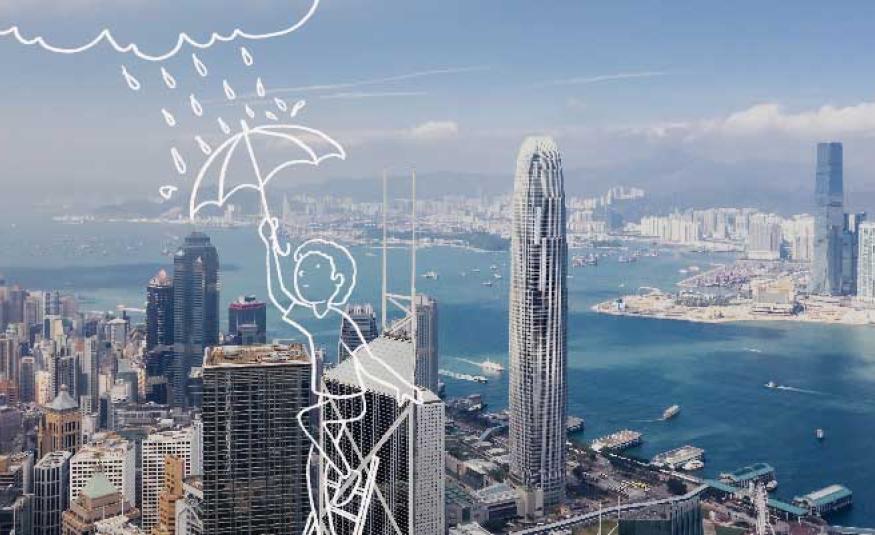By Stephane Asselin, Aurecon’s Chief Executive for Asia
Currently across the globe, 20 times more is spent on reducing emissions than building resilience to the effects of climate change, and governments and industries are rapidly realising the cost of this imbalance. Lives are being lost unnecessarily and the economic impact from more frequent and intense climate events is putting pressure on economies. While emissions cutting should continue to remain a prime focus, it’s promising that increasing numbers of governments and industries are also now prioritising climate change adaptation as they seek to ensure continued productivity and protection of lives and livelihoods. From restoring natural features, to creating climate ready, resilient infrastructure and utilising data and digital technology (to plan for various scenarios, inform investments, designs and emergency response plans), those investing in adaptation measures – in addition to mitigation - are unlocking new opportunities, avoiding losses and realising significant economic, environmental and social benefits.

Southeast Asia is a vulnerable region when it comes to the impacts of global warming. With vast and diverse geography and dense populations (with hundreds of millions living in low elevation coastal zones), the region has experienced many impacts of climate change, including water shortages, heatwaves, forest fires, typhoons and torrential rains.
Average temperatures in Southeast Asia have risen every decade since 1960 and according to the Global Climate Risk Index, Myanmar (3), Philippines (5), Vietnam (9), and Thailand (13) are among 13 countries in the world most affected by climate change in the past 20 years. In late 2019, a combination of burgeoning hydropower construction and intense dry weather saw the mighty Mekong - which stretches ~4,500 kilometres from the Tibetan highlands through Myanmar, Thailand, Laos and Cambodia, and emptying into the South China Sea in Vietnam - at its lowest in a century, creating challenges for food supply, amongst other impacts.
The cost of doing nothing
The projections for the future are for the region to continue to be hit hard by climate change if mitigation and adaptation remains unchecked. From the World Bank and Asian Development Bank to the Intergovernmental Panel on Climate Change, the outlook is consistent: the region’s 650+million people will continue to face negative impacts on agricultural yields, biodiversity, forest harvests, and availability of clean water which could lead to continued declines in living standards, productivity and human health.
There is also a great economic cost of ‘doing nothing’: the Economist Intelligence Unit's (EIU) Climate Change Resilience Index estimates it could cost the world economy US$7.9 trillion by 2050 as increased drought, flooding and crop failures hamper growth and threaten infrastructure. The index found that based on current trends, the fallout of warming temperatures would shave off three per cent of global gross domestic product by 2050. In an earlier study (2016), the Asian Development Bank (ADB) estimated if climate change goes untempered, Southeast Asia’s GDP could face an 11% decline by the end of the century due to the impact on key sectors such as agriculture, tourism and fishing, and the consequences to human health and labour productivity.
The value of doing something: adaptation
As governments across Asia - and the world - face this reality, policy makers continue to grapple with big decisions around changes in greenhouse gas levels or introducing carbon limits. And while curbing a country’s carbon footprint is critical, it’s also imperative to embrace adaptation measures which build resilience to climate change, keep people safe and minimise impacts of these extreme events, including loss of life, health and economic costs.
Recent analysis by the Global Commission on Adaptation shows that investing US$1.8 trillion globally in climate adaptation between 2020 and 2030 could deliver US$7.1 trillion in net benefits by avoiding damages and increasing economic growth. Not to mention the lives and livelihoods that could also be saved.
Across Asia, some governments and industries are acutely aware of this trade-off and are tackling their most pressing challenges and risks by prioritising adaptation measures such as restoring natural features, creating climate ready and resilient infrastructure and investing in data and digital technologies to scenario plan, inform investments and strengthen emergency response preparedness. These governments realise that being resilient to climate change is more than just building walls, it’s about how you limit carbon footprint, what you do with water levels, infrastructure and industry so as not to impact biodiversity. When developing your country, city and assets, it also means ensuring air pollution, health and the environment are considered and improved.
Those investing in adaptation measures underpinned by data and digital technology - from early warning systems and elevating roads and airports, to renewable sources of energy and relocating water intake and treatment facilities away from vulnerable areas - are avoiding losses and achieving significant economic, environmental and social benefits.
In Hong Kong, US$976m has been allocated to capital works for climate change, which includes a range of measures to ensure public infrastructure is climate ready. Technology plays a key role, particularly planning and building technologies, such as building information modelling (BIM), to enhance design and construction efficiency of major government capital works projects. In Indonesia where sea level increases and changes in weather and rainfall are the biggest climate threats, the government is prioritising resilience measures including moving the capital of Jakarta which is sinking ~17cm each year, and also flood-proofing the city with more resilient sea defences.
In Vietnam, climate change adaptation is crucial, especially for natural resource-dependent farmers, and the country is adapting infrastructure to focus on developing agricultural techniques and elevate houses above flood levels. Also, Vietnam now leads South East Asia’s solar photovoltaic market - with the largest installed capacity in the region of 5.5 gigawatts and the region’s largest solar power plant - in a bid to reduce its reliance on coal.
Singapore too is investing in projects to generate power from renewable sources, such as microgrids, to help pave the way towards sustainable energy. Also, with 30 per cent of Singapore less than five metres above the mean sea level, ~US$3.7b is being invested in coastal and flood protection. Some transport links are being built on higher ground such as the Tuas mega port (2m higher than highest observed water level) and Changi Airport’s Terminal 5 (5.5 metres above the mean sea level). Other transport links are being moved underground with green parks on top to tackle the heat island effect (caused by pavements, buildings, and other surfaces absorbing and retain heat), and improve quality of life for citizens by cooling the urban environment, reducing noise and pollution.
A recent article by my colleague Stéphanie Groen delves more deeply into the data and digital innovations which underpin these adaptation measures. From Artificial Intelligence and data analytics, to the Internet of Things and future prediction models, our Regional Centre of Excellence for Digital Engineering is helping many countries in Southeast Asia use these technologies to – as Stéphanie wrote - “understand the urgency of situations, address existing problems, predict future challenges and advise what can be done.”
However, there is no one size fits all solution and with the reality of climate events continuing to increase in frequency and severity, the ability for governments to be agile and stay ahead of the game is crucial. A focus on the future requires focus now, and while looking ahead is important, undertaking the base work in the present is often how we discover what is next. Governments may not be able to change the strength of a typhoon but - through investing in resilient infrastructure, data and digital technologies - it is possible to change the way countries, regions and people adapt and recover from it, while also unlocking new opportunities, avoiding losses and realising significant economic, environmental and social benefits. - DagangNews.com










